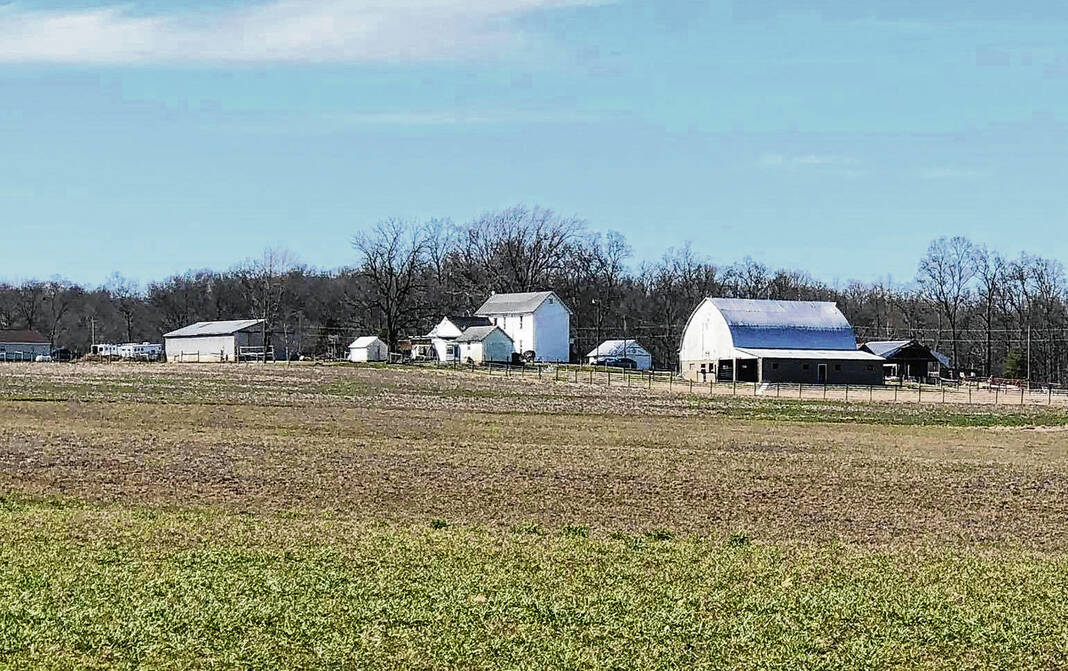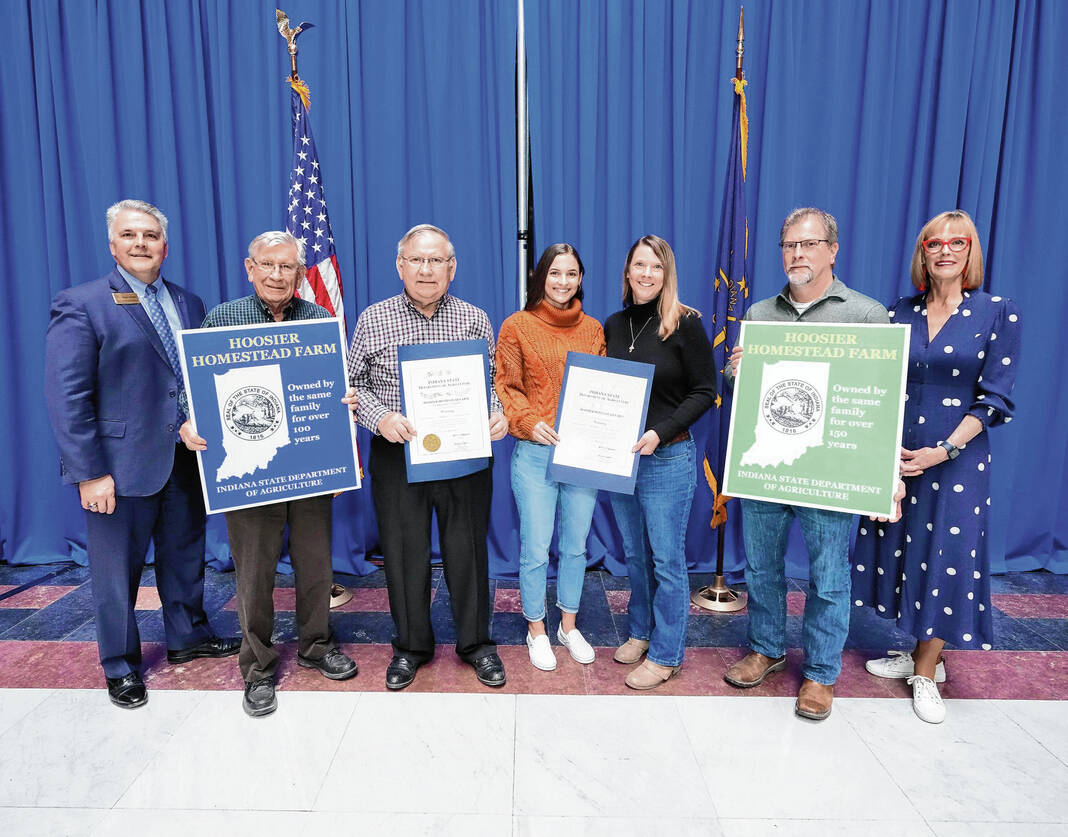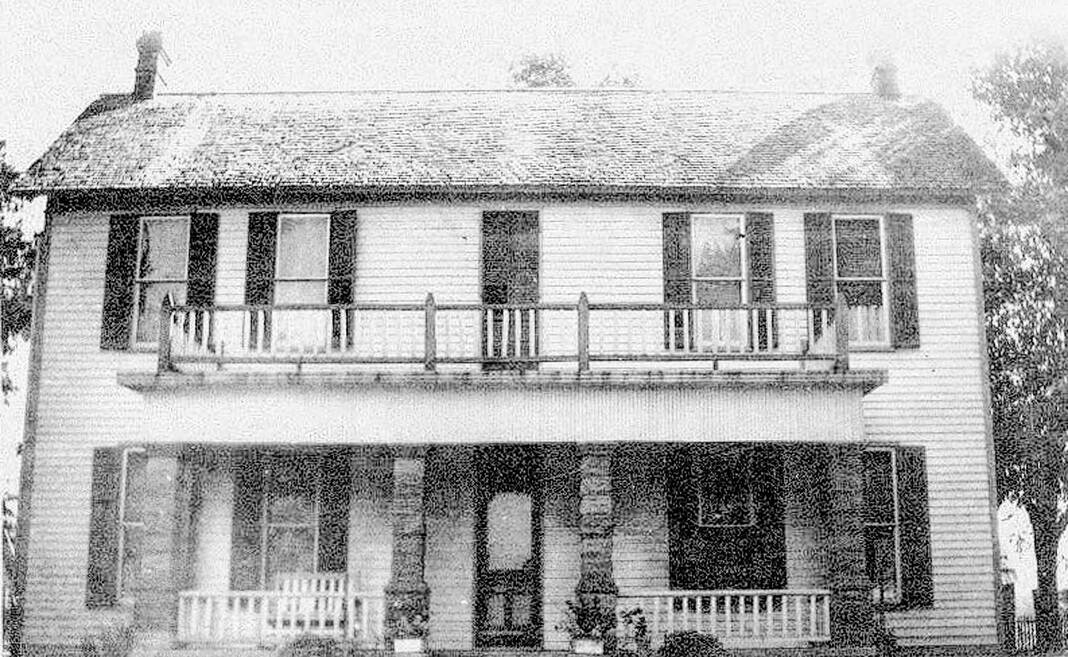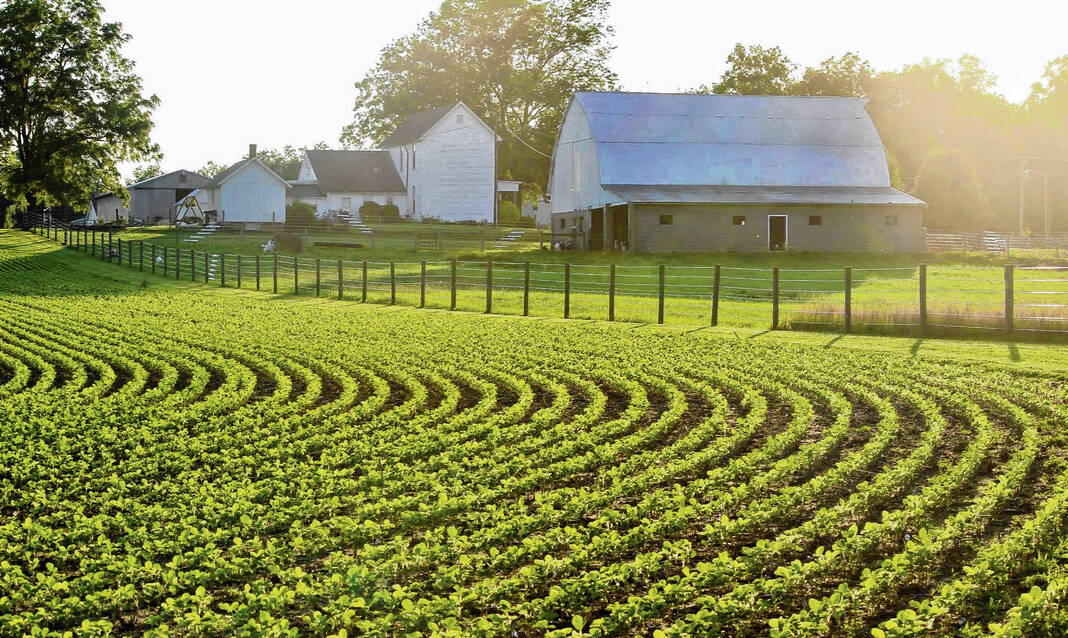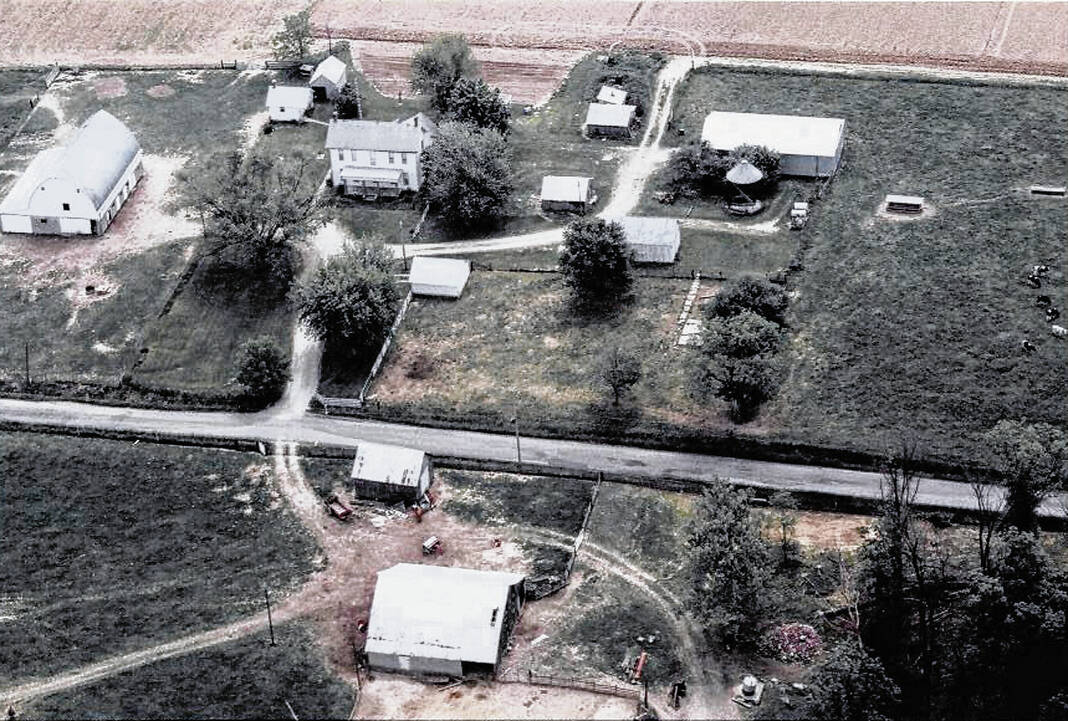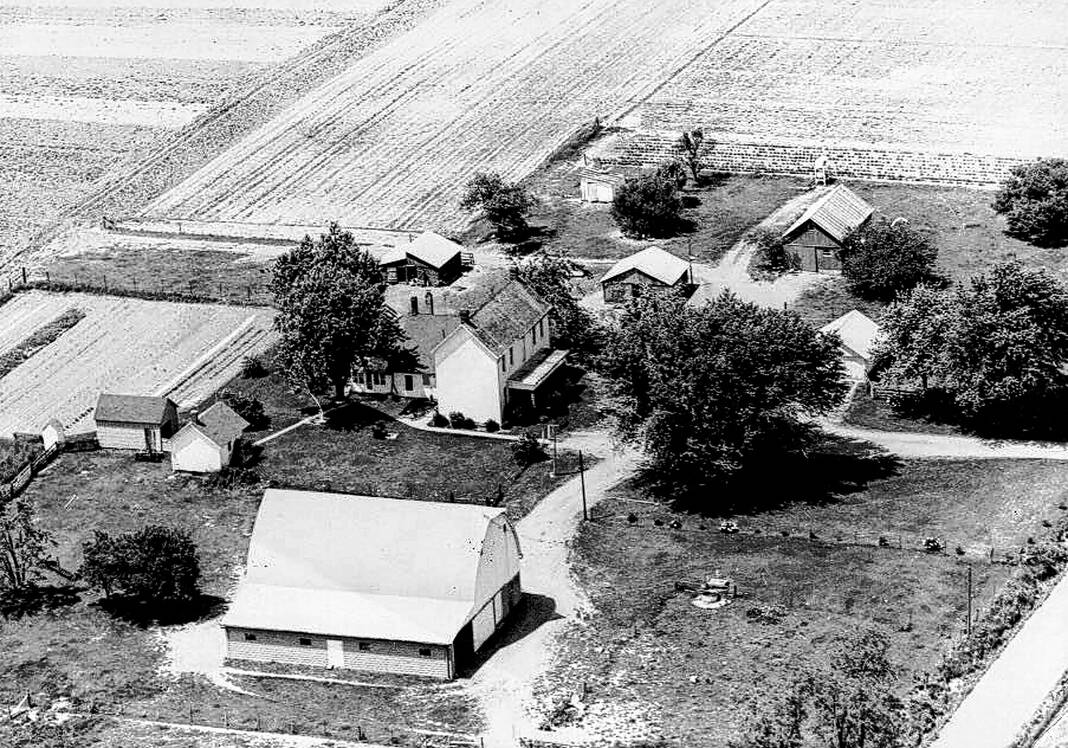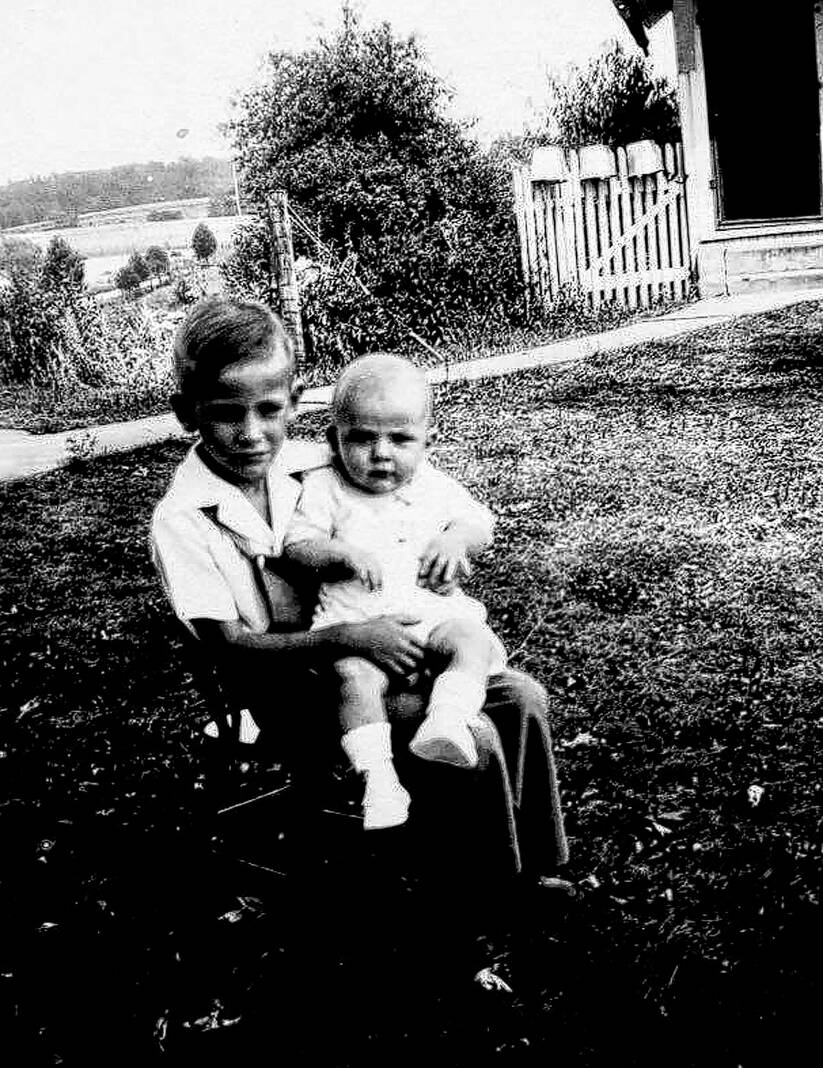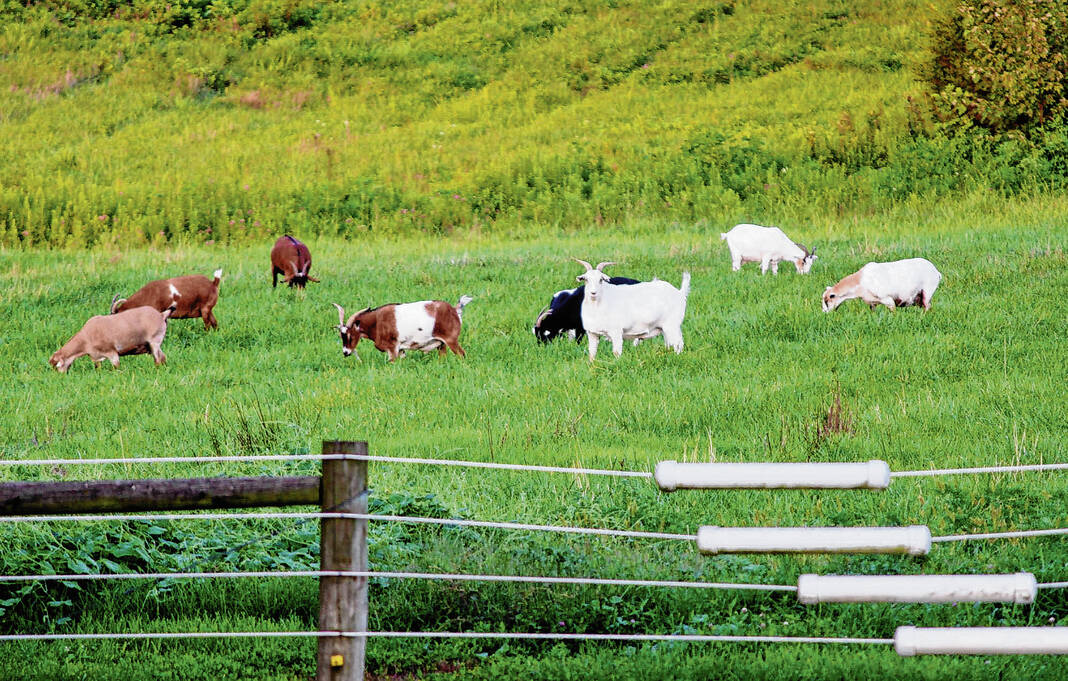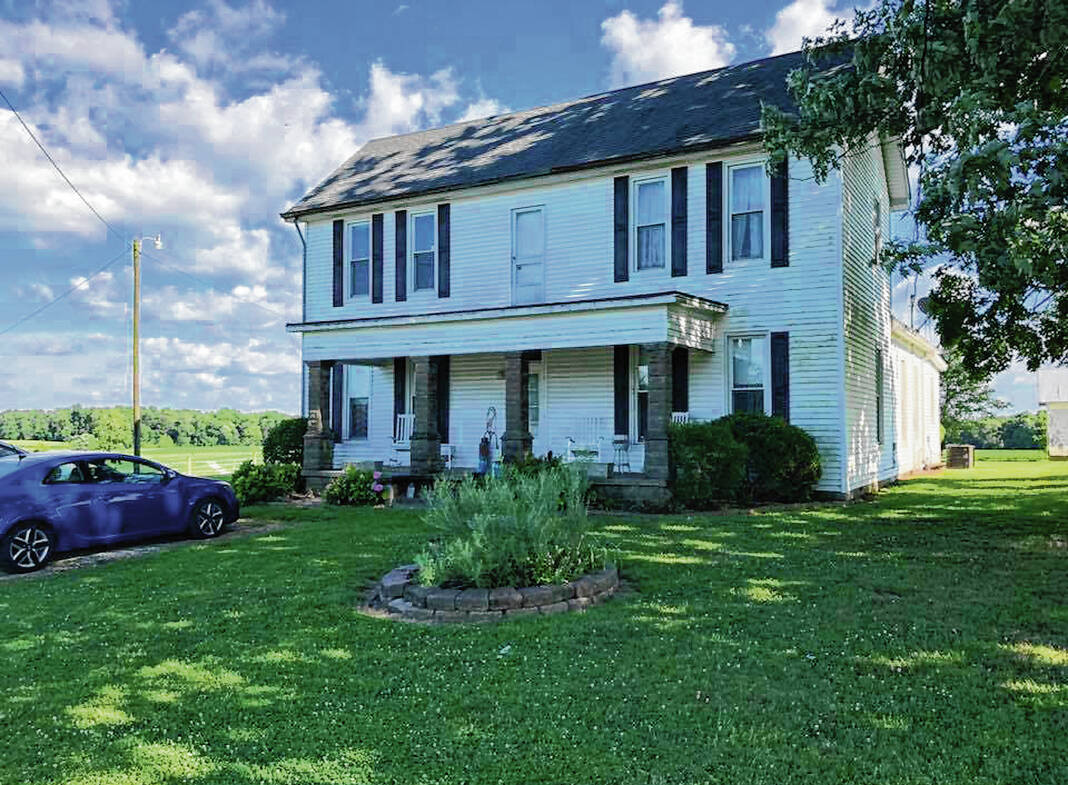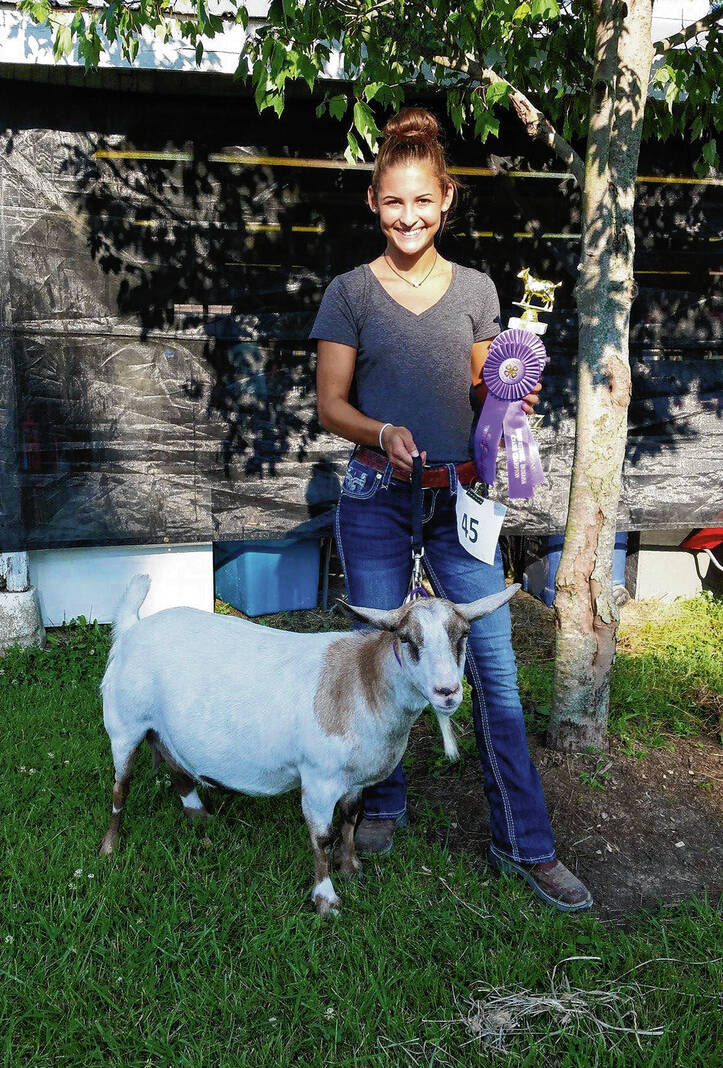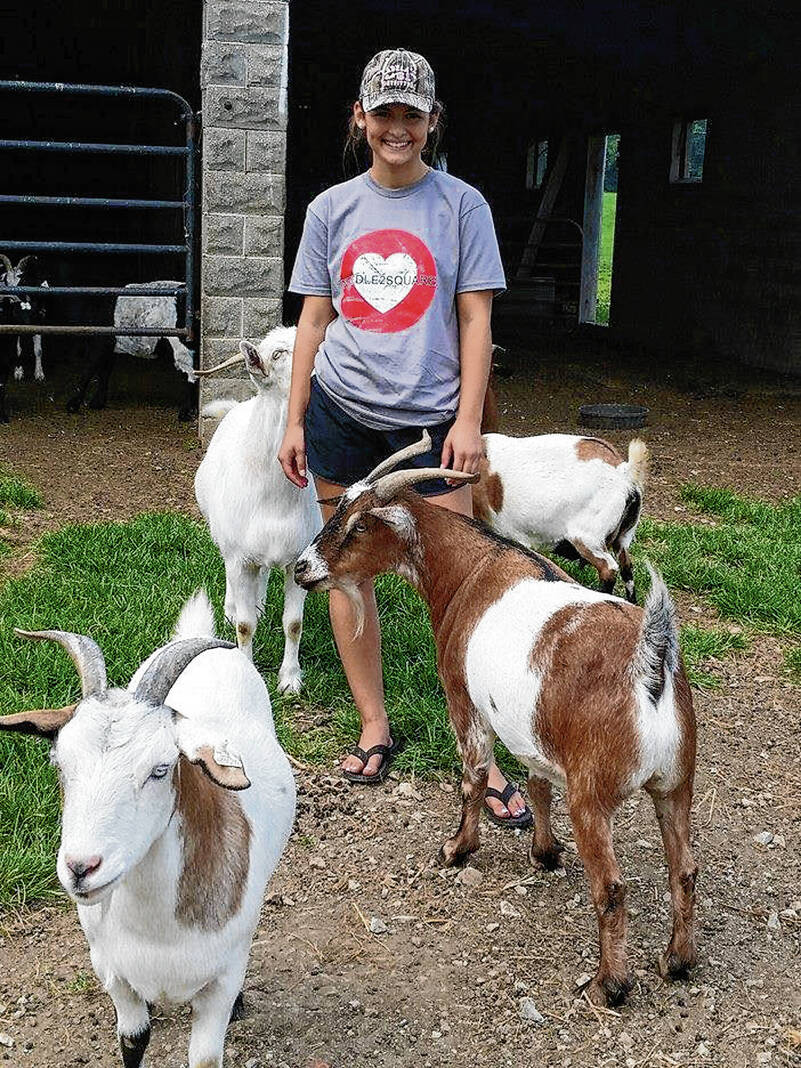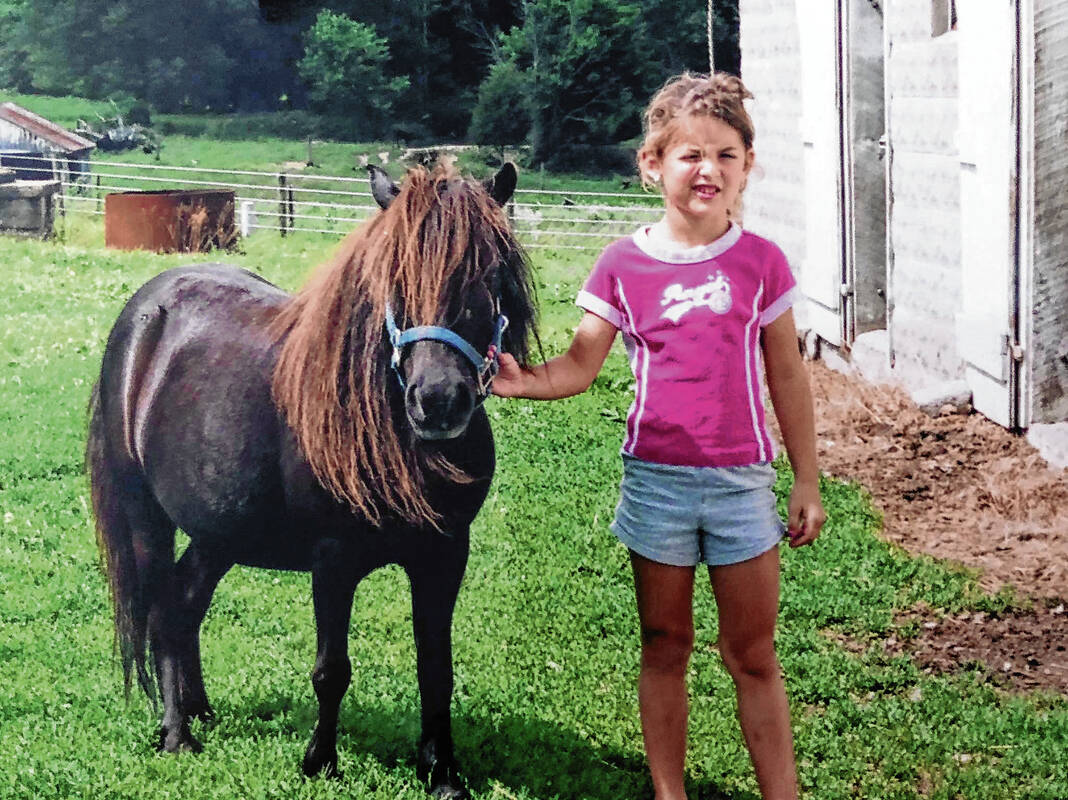Arriving in the United States from Germany in 1835, Gerhard Moenning’s first land purchase was a 40-acre plot in Vernon Township in Jackson County.
He bought it from the U.S. government for $50.
Two years later, he purchased another 40 acres of land from the government for $50. It was about 8 miles west of the first one.
In 1838, he sold his first 40 acres, and in 1844, he traded his second 40 acres to his neighbor for an 80-acre plot elsewhere. He and his sons then farmed that land for about seven years.
He, however, wasn’t done shopping for the land that pleased him better.
On March 24, 1851, he bought 124 acres from the Klosterman family. All of these years later, that land is still in the Moenning family.
With it being used for farming over the years, the property at 3361 E. County Road 150N, Seymour, was eligible for a Hoosier Homestead Award in recognition of the family’s commitment to Indiana agriculture.
To be named a Hoosier Homestead, farms must be owned by the same family for more than 100 consecutive years and consist of more than 20 acres. If less than 20 acres, the farm must produce more than $1,000 of agricultural products per year.
Indiana farms may qualify for three honors: Centennial Award for 100 years of ownership, Sesquicentennial Award for 150 years of ownership and Bicentennial Award for 200 years of ownership.
The Moenning family recently learned it was among 69 families receiving the honor this year. They received large signs for the centennial and sesquicentennial awards to place on the property.
Since the program’s inception in 1976, nearly 6,000 families have received the Hoosier Homestead Award. Many past awardees can be identified by the sign proudly displayed in front of the family farm or field.
Attending the ceremony at the Indiana Statehouse in Indianapolis were brothers Raymond and Richard Tormoehlen; two of Raymond’s children, Staci Rogers and Stan Tormoehlen; and Rogers’ daughter, Whitney Rogers.
Staci has lived in the home on the property since 2001 and is the fifth owner of a house there, and Whitney was the sixth generation to live there until she moved to Jeffersonville. Staci filled out the application and submitted all of the paperwork to be considered for the award.
“I just felt like it was important to the family,” Staci said.
While she grew up in a home nearby, she has fond memories of the house where she currently lives because she often visited when her grandmother lived there.
Helping take care of the cows and chickens, stealing grapes, eating sunshine cake and admiring the beautiful flowers are among the special memories.
“It was just such a nostalgic place, so getting to buy it was just like a dream come true for me,” Staci said.
“Even though I technically am the owner today, I still feel like it’s not just my farm. It’s like all of our farm,” she said. “I feel like it belongs to all of our family, and it’s just all of our heritage because there are so many memories of all of us kids coming here and growing up, and Dad, he was born here and grew up here … so I wanted to do my part and preserve it for our family.”
Her aunt provided five photos of the farm to include in a video that played during the ceremony, but due to her health, she couldn’t attend. A week later, she died, so Staci said she’s glad her aunt knew about the family receiving the award.
The area is known as Moenning Hill because several of the family members live in different homes near the original homestead.
The original home was built in 1851 in a field behind where the current house sits. Staci still has the deed.
“When they till the field up, they kick up bricks, so you can go out in this one section over here that joins mine and my brother Mark’s property, and you can still pick up pieces of brick and stuff,” Staci said.
Moenning then deeded the property to his son, Henry Moenning, who later had the house torn down and had a new one built in 1890.
After Henry died, his wife, Elsie Moenning, owned the home. She married Hugo Tormoehlen.
Raymond Tormoehlen was the next property owner before he deeded it to his daughter.
“When I bought it in ‘01, it needed a lot of work, so then we sided it,” Staci said. “The guy that did the siding and stuff on it and put the new windows in, he said, ‘You never have to worry about termites because it’s yellow poplar, and he said, ‘This house has such good bones. Yellow poplar is almost like petrified wood. Your ancestors must have been really rich to afford yellow poplar.’”
When the house was first built, Staci said it didn’t have a kitchen or a bathroom. At one time, there was a spiral staircase and a balcony.
“My uncle, Richard, when he first got married, him and his wife lived here and they lived upstairs, and they wanted more privacy, so they talked my grandpa and grandma into taking off the spiral staircase and building walls,” Staci said.
For the farm side of the property, Staci said her grandparents and uncle primarily had dairy cattle.
“My grandpa, he used to have teams of mules and teams of horses and did a lot of farming that way,” she said. “There were pictures of the great-grandparents that did that, too.”
Staci was raised in the house next door.
“During the summers, me and my brothers would always ride our bikes up here every night to do the chores and feeding and stuff,” she said.
“I used to spend a couple days a week with my grandma helping her,” she said. “She ended up having a bad accident in the early ’80s, so it kind of crippled her, so then I would help her take care of her flowers and she would can. You would come in and she had a table that was humongous, and she would have noodles all spread out and sit there with a paring knife. Best cook ever.”
The family also had some hogs for butchering.
“I still remember having hogs across the road when I was young because we used to have a corn crib,” Staci said. “The concrete base is still out in my goat pasture. We would take corn cobs and go over there to the hogs and fling them.”
The family still butchers hogs today.
“We used to have a smokehouse that sat outside here, but when I bought the property, it had termites really bad. It was getting in sketchy shape,” Staci said. “When I bought the property in ‘01, they were still using the smokehouse to hang meat, and so then they used it for a year or two, and then I’m like, ‘Guys, it’s got termites so bad, it’s falling apart and we need to get rid of it.’”
Staci also remembers her grandmother raising chickens for the eggs and chicken, and the family did a lot of grain farming, too.
Since Staci has owned the property, she has had horses, miniature horses and goats. One year for her birthday, she asked for a goat.
“I started out with a buck, two does and a baby, and once we got them, it was kind of like potato chips, you can’t have just one,” she said, smiling. “Then it kind of went crazy from there. It was just like they multiplied from there.”
She always had myotonic, or fainting, goats. One year, she went to southern Kentucky to buy a herd of 16.
“Over the years, I just worked toward getting a better bloodline, better quality of goat,” she said. “I know one time, it was like a 10-day span, we had 38 babies born. We were coming home from one of (Whitney’s) ballgames and her dad was like, ‘How many goats do we have right now?’”
They started naming them and reached 100 goats.
“During the winter, we would literally spend the whole evening out there with the babies and changing water and feeding them, giving them hay,” Whitney said. “It was definitely a lot of work. You also appreciate it.”
The family was successful in petitioning the Jackson County Fair to allow 4-H’ers to show myotonic goats, and Whitney and her two cousins wound up doing that for several years.
After they graduated from high school and Whitney moved on to college, the herd got down to about 20 and kept getting smaller. Now, Staci only has three as pets.
Going from living on the farm to an apartment has been hard for Whitney.
“I just remember always being outside playing. I remember walking through the pasture barefoot and sitting in the horse trough sunbathing, doing country stuff,” she said, smiling. “It has been challenging because I miss spending summers here, and now, it’s just so peaceful and pretty here. It’s a privilege to be a part of something so special, and to be able to grow up in the house, it’s a cool feeling.”
Her cousin, Jacob Tormoehlen, grew up nearby and still has a detail shop there, but he now lives a few miles away near Crane Hill.
“Growing up, I remember all of the old farm equipment, the corn crib. I’m a diehard farm kid at heart,” he said. “Any chance I got to ride on the tractors with Grandpa, Dad, plowing snow, whatever, I think that was the biggest thing growing up on a farm was just being with them. Over the years, it has changed, but it’s still the family farm.”

